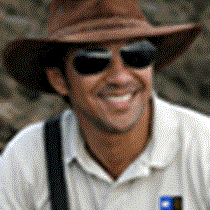Española Island
One of the most remarkable advantages of visiting the islands for an entire week is the fact that we learn from the animals and their every day behavior. Our knowledge increases every minute that we spend observing the Galápagos creatures, and perhaps among the most noticeable behaviors, is their lack of fear. This morning we were surely not surprised but rather intrigued to find a group of Española mockingbirds being friendlier than the mockingbirds from the other islands. We were at Gardner Bay located on the island of Española, and that is the main reason why. This particular species known as “hood mockingbirds” are by far much more inquisitive than the ones we had previously seen, and they were both showing us a great deal of curiosity or some times just being oblivious to our presence.
Española is also known to be the oldest island where lots of species have had the chance to arrive and establish quite successfully. The foreground of our trail was usually covered with lots of new species and some not so new, as it was the case with the sea lions.
There was so much going on that we could hardly focus in one single subject but we were rather distracted mainly by the gentle sound coming from the hungry baby sea lions suckling the milk from their mothers. Dominant males were also contributing to the “sound track” during our visit, since their barking could be heard even way far from the shores of the island.
As we hiked on the Island we could observe the well known “Bobbie land,” and not too far away from it we found what many of us were waiting for, the waved Albatross! The courtship dance of these birds was something that we weren’t expecting to see but we did, and we are grateful for it. It is the typical history of two lovers falling in love; caring and tenderness is involved in the whole process once the selection has being made. Both parents would take turns to keep the egg safe and of course the young albatross would receive all the protection that the parents can provide.
Albatross have not much to worry about; maybe some mockingbirds would foolishly attempt to steal their egg at some point; or maybe a Galápagos hawk (with much better probabilities than a mockingbird) could attempt to feast on a young albatross. In any case, this is the daily life of the wild animals in the Galápagos and their non-stop drama to survive in these once upon a time, inhospitable islands.
One of the most remarkable advantages of visiting the islands for an entire week is the fact that we learn from the animals and their every day behavior. Our knowledge increases every minute that we spend observing the Galápagos creatures, and perhaps among the most noticeable behaviors, is their lack of fear. This morning we were surely not surprised but rather intrigued to find a group of Española mockingbirds being friendlier than the mockingbirds from the other islands. We were at Gardner Bay located on the island of Española, and that is the main reason why. This particular species known as “hood mockingbirds” are by far much more inquisitive than the ones we had previously seen, and they were both showing us a great deal of curiosity or some times just being oblivious to our presence.
Española is also known to be the oldest island where lots of species have had the chance to arrive and establish quite successfully. The foreground of our trail was usually covered with lots of new species and some not so new, as it was the case with the sea lions.
There was so much going on that we could hardly focus in one single subject but we were rather distracted mainly by the gentle sound coming from the hungry baby sea lions suckling the milk from their mothers. Dominant males were also contributing to the “sound track” during our visit, since their barking could be heard even way far from the shores of the island.
As we hiked on the Island we could observe the well known “Bobbie land,” and not too far away from it we found what many of us were waiting for, the waved Albatross! The courtship dance of these birds was something that we weren’t expecting to see but we did, and we are grateful for it. It is the typical history of two lovers falling in love; caring and tenderness is involved in the whole process once the selection has being made. Both parents would take turns to keep the egg safe and of course the young albatross would receive all the protection that the parents can provide.
Albatross have not much to worry about; maybe some mockingbirds would foolishly attempt to steal their egg at some point; or maybe a Galápagos hawk (with much better probabilities than a mockingbird) could attempt to feast on a young albatross. In any case, this is the daily life of the wild animals in the Galápagos and their non-stop drama to survive in these once upon a time, inhospitable islands.




